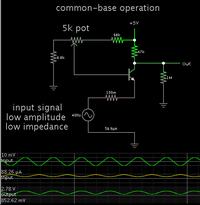Jishnu Rajeev
Newbie level 3
Hi,
why common emitter input impedance more than common base config even if input is given across base - emitter junction in both the cases ?
Thanks
Jishnu
why common emitter input impedance more than common base config even if input is given across base - emitter junction in both the cases ?
Thanks
Jishnu
